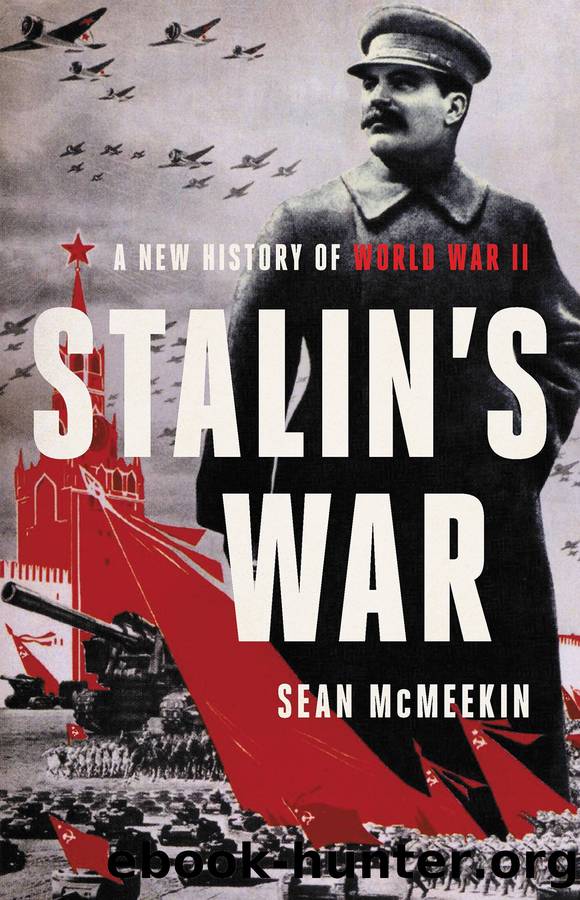Stalin's War by Sean McMeekin

Author:Sean McMeekin [McMeekin, Sean]
Language: eng
Format: epub
Publisher: Basic Books
Published: 2021-04-20T00:00:00+00:00
âI have to inform you,â the Vozhd wrote Churchill on October 3, âthat the situation in the Stalingrad area has deteriorated since the beginning of September. The Germans [have] managed to secure superiority in the air of ratio 2:1.â The VVS did not have âenough fighters for the protection of our forces,â Stalin continued, alluding to Churchillâs diversion of 154 Kobrushkas, and, Stalin conceded, âeven the bravest troops are helpless if they lack air preparation.â If Airacobras were not available, he requested that Churchill ship him British Spitfires as soon as possible. In a sign of how critical a priority US and British pursuit planes now were at Stalingrad, Stalin requested that the Allies reduce the quantity of âtanks and artillery equipmentâ on lend-lease ships to make room for fighters. To beat off the German offensives at Stalingrad and in the North Caucasus, the Vozhd demanded eight hundred pursuit planes per monthâfive hundred American and three hundred British.33
Stalin was no less demanding with Roosevelt, although he was more polite than with Churchill. âWe are willing to discard for the time being,â Stalin wired the president on October 7, 1942, âall of the deliveries of tanks, artillery, munitions, pistols, etc.⦠But at the same time we are extremely in need of an increase in the delivery of pursuit planes of modern type (such as the âAiracobraâ).⦠It should be born in mind that the âKittyhawkâ planes do not stand the fight against present German pursuits.â âThe experience of the war,â the Vozhd concluded his plea, âhas shown that the bravest armies become helpless if they are not protected from the blows from the air.â34
Stalin was no less forthright about Soviet desperation for American foodstuffs. In order to make up for lost agricultural production owing to the German occupation of the Ukraine and southern Russiaâs black earth region, Stalin informed Roosevelt on October 7 that âit is essential to secure the delivery within 12 months of 2 million tons of grain (wheat) as well as such quantity as possible of fats, concentrated food and canned meat.â Roosevelt complied with alacrity, having Hopkins and the Lend-Lease Administration commandeer almost the entire rolling stock of the western United States for Stalin, shipping an astonishing 112,000 tons of foodstuffs from Seattle, Portland, and San Francisco to Soviet Far Eastern ports in November 1942 alone. During the second protocol, in force through June 30, 1943, the United States delivered to Stalinâs armies 997,783 tons of foodstuffs, including grains, canned and smoked meats, sausages, fats, vegetable oil and shortening, canned and dried milk, dehydrated cheese, eggs, vegetables, fruits, salt, sugar, coffee, tea, and vitamins.35
Stalin did not conceal his desperate need for trucks either, informing Roosevelt in his October 7 plea that the Red Army needed monthly supplies of â8,000 to 10,000.â The soon-famous Willys MB and Ford GPW all-wheel-drive off-road jeeps and Studebaker trucks, which had begun arriving in Russia in 1942, were outfitted with 76 mm Red Army guns and placed into immediate use, playing a critical role supplying mobile forces deployed beyond railheads.
Download
This site does not store any files on its server. We only index and link to content provided by other sites. Please contact the content providers to delete copyright contents if any and email us, we'll remove relevant links or contents immediately.
Einstein: His Life and Universe by Walter Isaacson(1983)
Finding Freedom: Harry and Meghan and the Making of a Modern Royal Family by Omid Scobie & Carolyn Durand(1367)
Promised Land (9781524763183) by Obama Barack(1323)
Finding Freedom by Omid Scobie(1268)
Compromised by Peter Strzok(1242)
JFK by Fredrik Logevall(1135)
Freedom by Sebastian Junger(836)
The Russia House by John Le Carré(798)
Salford Lads: The Rise and Fall of Paul Massey by Bernard O'Mahoney(749)
The Irish Buddhist by Alicia Turner(739)
Day of the Dead by Mark Roberts(738)
Graveyard (Ed & Lorraine Warren Book 1) by Ed Warren & Lorraine Warren & Robert David Chase(693)
Kremlin Winter by Robert Service(693)
A World Ablaze by Craig Harline(687)
Joe Biden: American Dreamer by Evan Osnos(657)
Flying Tiger by Samson Jack(648)
100 Things Successful Leaders Do by Nigel Cumberland(626)
Melania and Me: The Rise and Fall of My Friendship With the First Lady by Stephanie Winston Wolkoff(624)
The Mission by David W. Brown(613)
